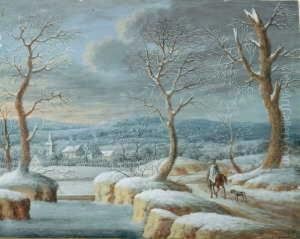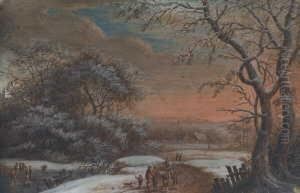Georg Christoph G. Von Bemmel Paintings
Georg Christoph Gottlieb von Bemmel was a German painter, born in 1705. Although not as widely recognized as some of his contemporaries, von Bemmel made contributions to the art world of the 18th century, particularly within the context of the German-speaking regions.
Von Bemmel was part of a family with artistic lineage, his father being a painter as well, which was a common practice for the time where artistic skills and professions were often passed down through generations. He likely received his earliest training in the arts from his family, which would have provided him with the foundational skills to develop his craft.
As was typical for artists of his era, von Bemmel would have engaged in studying the works of both his predecessors and peers, possibly traveling to various art centers in Europe to broaden his artistic education. He would have learned to work in the prevalent styles of the time, which in the 18th century would have included elements of the Baroque and the burgeoning Rococo style.
Von Bemmel's body of work, though not thoroughly documented, would have consisted of the typical genres of his time, possibly including religious scenes, portraits, landscapes, and still lifes. His style would have reflected the ongoing transition from the grandeur and drama of the Baroque to the lighter, more playful qualities of the Rococo.
Despite a lack of extensive records of his life and works, it is clear that von Bemmel was an active participant in the art scene of his time. He would have encountered the shifting tastes of the art patrons and the complex dynamics of the art market. These factors would have influenced both the content and the style of his work.
Georg Christoph Gottlieb von Bemmel died in 1772. Although he may not have achieved the fame of some of his contemporaries, the efforts of art historians to uncover and appreciate the works of lesser-known artists such as von Bemmel contribute to a fuller understanding of the richness and diversity of 18th-century European art.

